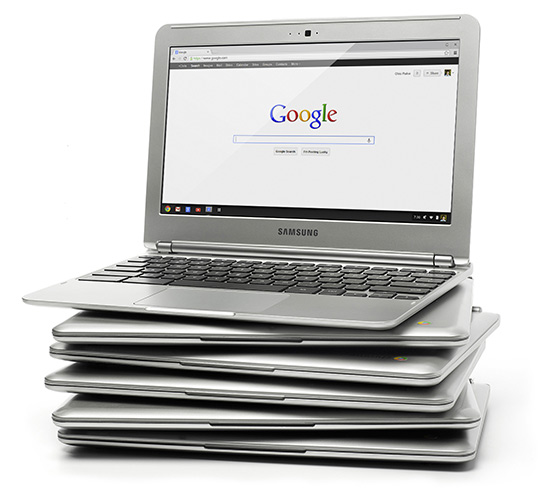I just had a couple of thoughts on Chromebooks that I wanted to share. There has been a growing interest in Chromebooks over the past year or so. I ran a Chromebook session at the IT Managers Conference in Canberra earlier this year and there was quite a bit of interest there, and I hear of a growing number of schools here in Sydney that are starting to look at Chromebooks as a possible option for student devices.
At PLC Sydney we started with a small set of 10 Chromebooks about 2 years ago, and have been steadily adding more, mainly in our junior school. They have been a major success with students and teachers alike. Easy to deploy and manage. Robust and reliable. Simple to use, and they do most everything we need.
You might notice I didn’t tout price as the advantage… while Chromebooks are quite inexpensive (around $300 each) I think it would be a major mistake to view them as nothing more than “a cheap alternative” to a “proper computer”. Being inexpensive is a nice benefit, but it’s just that; a benefit, not a feature.
The real features of Chromebooks are all the other reasons I mentioned above. We are choosing to use Chromebooks, not in spite of the fact that they don’t have a full blown conventional operating system, but BECAUSE they don’t. The speed, security and simplicity of ChromeOS is the real attraction, not just the cheap price.
After dabbling with cheap Chromebooks over the past 2 years, I bought myself a Chromebook Pixel 2 when I was in the US a few weeks ago. The Pixel is often criticised as being far too expensive for a computer perceived as being “just a browser”. At $999 USD for the cheaper model (the one I got) it works out at over $1300 AUD, which many might say is stupid expensive for what it is.
That said, even after just a week of use I have to say the Pixel is the best computer I have ever owned. It has the best screen, the best build quality, is fast, responsive, and delightful to use. I love it, and although it seemed expensive at first, and a bit of a luxury purchase, I now think it was actually very reasonable for what it can do and how it does it. I can see it redefining the way I use a computer.
Which got me thinking about the place of Chromebooks in schools over the next few years. I think the Pixel is a glimpse into the future of computing. I predict that over the next few years, as the hardware on Chromebooks grows exponentially better and the cost of producing a quality Chromebook drops exponentially lower, and the capability of what you can do in a browser grows exponentially more amazing, that this will be the future of modern computing. The Pixel is a little glimpse into that future right now.
2 years ago, based on the Chromebooks I was seeing at the time, I would not have said this. The idea of working in nothing but a browser, and all the limitations that implied at the time, was simply not good enough to be my primary machine. Now, when you look at browser based applications like Wevideo, Soundtrap, LucidPress, Polarr, etc, as well as the increasingly powerful core applications in Google Apps for Education, and you see just how incredibly capable these apps are running in nothing but a browser… well, it’s kind of mind blowing.
Right now, the difference in “going Chromebook”, compared to what was possible even 6 to 12 months ago, is astounding. And I have no doubt that the difference between the Chromebook experience now and what it will be in 1, 2 or 5 years from now will be even moreso. Right now, ChromeOS on cheap commodity hardware is adequate. But the Pixel has shown me that running ChromeOS on great hardware can be simply amazing.
I feel like I’ve seen the future.


 For a while now I’ve been really keen to get my hands on one of the new
For a while now I’ve been really keen to get my hands on one of the new